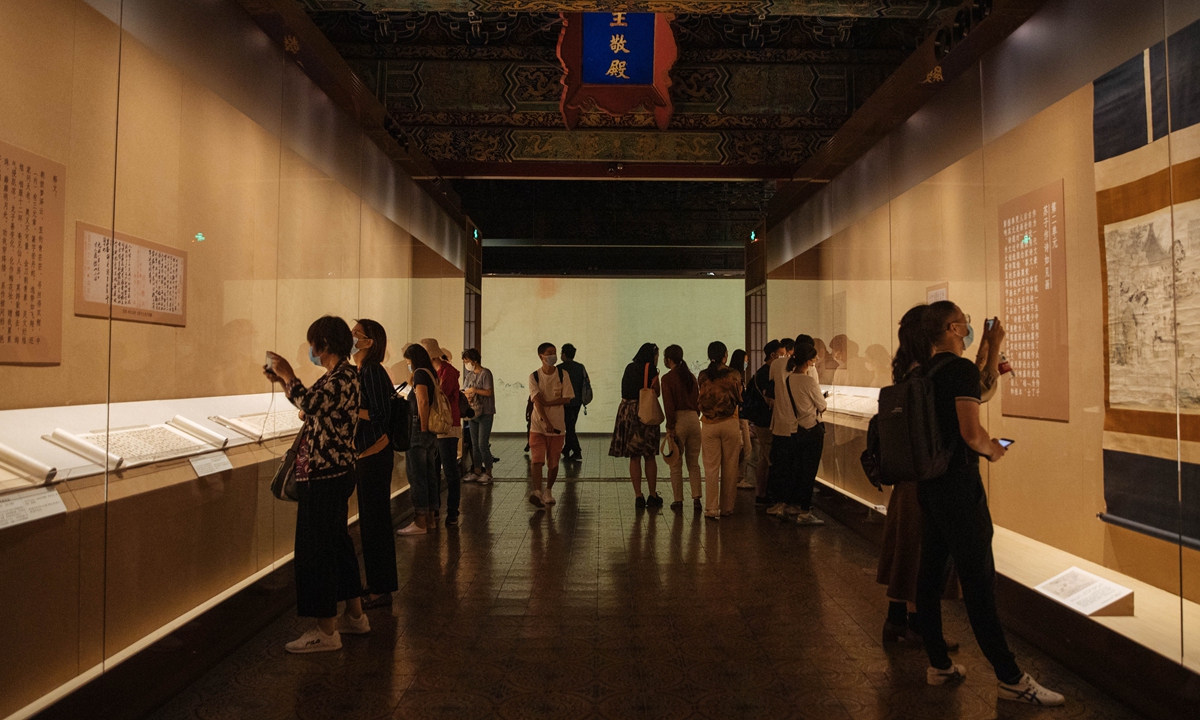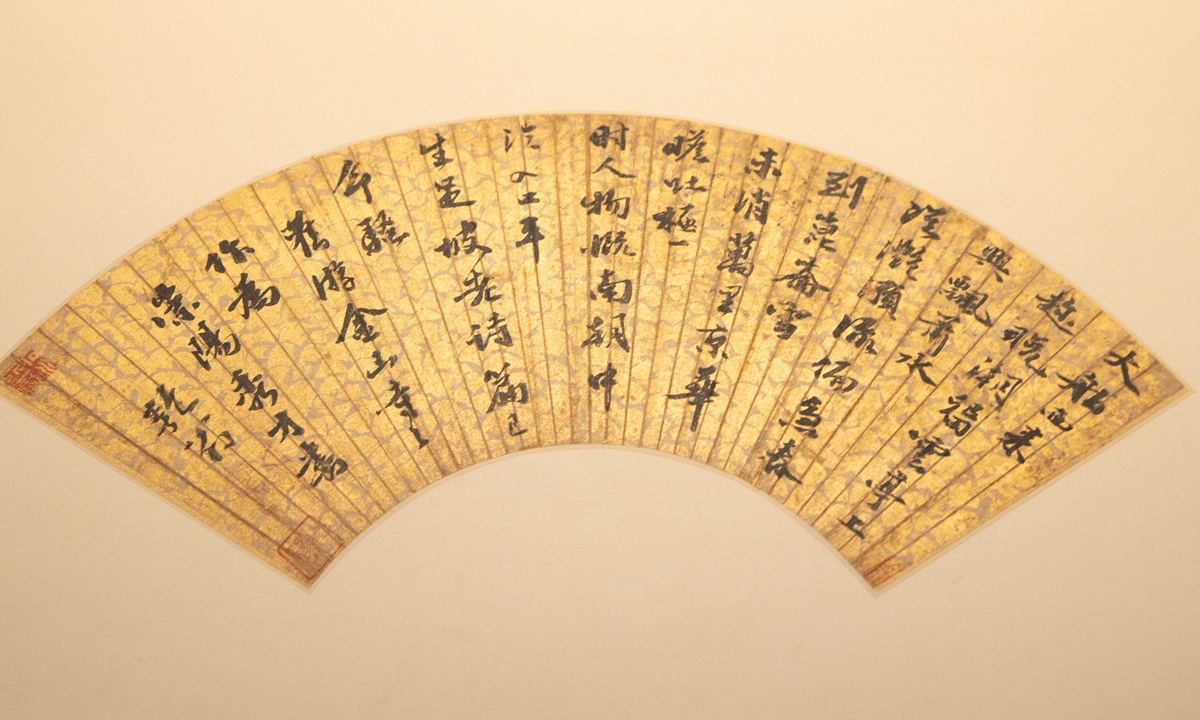Beijing's Palace Museum explores life of the great Northern Song poet Su Shi
By Chen Xi Source: Global Times Published: 2020/9/2 18:38:42

Visitors explore the Su Shi exhibition at the Palace Museum in Beijing on Tuesday. Photo: Li Hao/GT

A calligraphy work at the Su Shi exhibition Photo: Li Hao/GT
In a recent documentary the BBC called Tang Dynasty (618-907) poet Du Fu "China's greatest poet." On Tuesday, China's Palace Museum in Beijing kicked off an exhibition to celebrate another one of the country's greatest poets - Su Shi of the Northern Song Dynasty (960-1127). The exhibition takes visitors back to ancient China and offers various anecdotes about the versatile cultural icon.The exhibition features a total of 78 works to include paintings, calligraphy, epigraphy rubbings and documents by Su, his teachers and friends, according to Ren Wanping, deputy director of the Palace Museum and curator of the exhibition.
High popularity
Considered as one of the four greatest calligraphers of the Northern Song Dynasty, Su was a poet, painter and gastronome, but he also suffered a lot of ups and downs in his life.
He passed the imperial civil service examinations at the age of 19 and became a young official, gaining the appreciation of the emperor. However, he was later exiled after his political opponents framed him. His boldness, generosity, tolerance and lack of restraint can be seen in his calligraphy and poetry.
Many of Su's poems appear in primary and middle school textbooks in China.
His works have also entered today's popular culture. His work "Shuidiaogetou" for example was adapted into the popular song "Wishing We Last Forever" sung by the famous songstress Teresa Teng.
The lyrics to the poem "May we all be blessed with longevity, though thousands of miles apart, we are still able to share the beauty of the moon together" are familiar to Chinese across multiple generations.
Many of the visitors to the exhibition that the Global Times talked to said they had come because Su is their favorite poet and they wanted to know more about his life.
Gao Wei, 72, told the Global Times that he was very impressed by a painting depicting Su's late life.
According to the introduction to the painting, Su was out walking one day during his exile in Hainan in southern China when he got caught in a rainstorm. He had to borrow a hat and some clogs from some farmers, which didn't match his clothing at all. His funny appearance was mocked by farmers, but he did not mind at all.
"Su Shi's carefree attitude about life makes me feel that I should also live a more cheerful and optimistic life," said Gao.
Lu Yao, a 47-year-old woman who was taking her son to the exhibition, told the Global Times that she initially hoped her son could learn more about the poet, but she never expected that she herself would appreciate it so much.
"Su reminded me that the essence of life is that you can always feel the happiness and nature of life whenever and wherever you are," she said.
Reopening amid COVID-19
The exhibition is the first to be held in the Palace Museum since the COVID-19 epidemic broke out as well as the first one held as part of the 600th anniversary of the completion of the Forbidden City, the site the museum calls home.
According to the museum's anti-pandemic measures, visitors must book tickets online, and then show a green health QR code and ID at the ticket center. They must also wear face masks during their visit.
"We will remind visitors of the rules if they are not wearing a mask properly. That's part of our job since the museum reopened to the public amid the coronavirus pandemic," a Palace Museum employee told the Global Times.
The exhibition is at the museum's Wenhuadian, or Hall of Literary Brilliance, where imperial lectures were given and final imperial examination papers were reviewed during the Ming (1368-1644) and Qing (1644-1911) dynasties.
Wu Jing, a tour guide and blogger who came to livestream the exhibition, told the Global Times that he had high expectations for the event as Wenhuadian usually only opens to the public once a year.
He added that due to the coronavirus, the number of visitors to the Palace Museum has dropped considerably. Currently, only 8,000 visitors are permitted in a day and many visitors who live far from Beijing are not able to come to the museum.
In an attempt to revitalize the tourism industry, he and about a dozen of his colleagues have formed a livestreaming team. Currently, the team has attracted around 1.5 million followers on Douyin, the Chinese version of TikTok.
Sun Hanguo, a 24-year-old publisher, told the Global Times that the exhibition gives the public a good opportunity to learn more about traditional Chinese culture.
He pointed that he felt very grateful that the efficient anti-epidemic measures taken by the Chinese government can help art events return, but also said it was a pity that art exchanges between China and foreign countries are being affected by the deadly virus.
The exhibition is scheduled to end on October 30, and on September 10, the Palace Museum is planning to showcase a huge new exhibition as part of its 600th anniversary.
Newspaper headline: Sharing beauty together
Posted in: ART,CULTURE & LEISURE